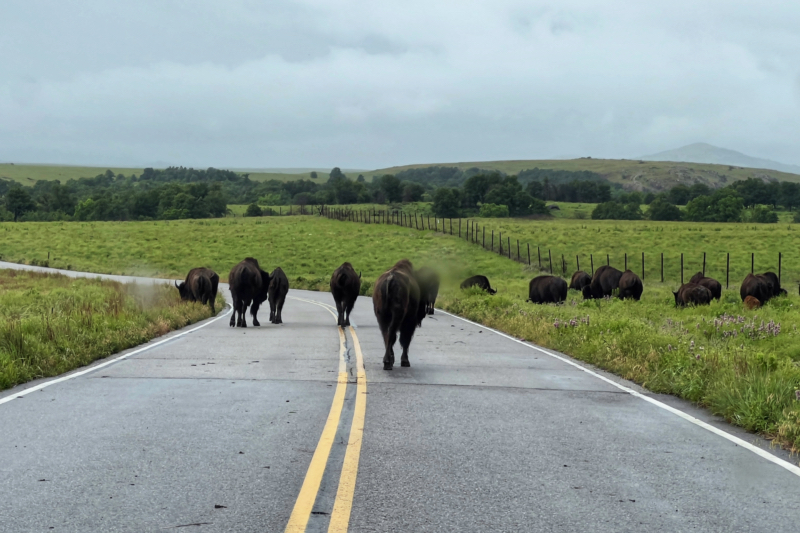If you’ve ever visited the Wichita Mountains Wildlife Refuge in Oklahoma, you might have noticed that a significant portion of this expansive refuge is fenced off and inaccessible to the public. This can seem a bit puzzling at first, especially for those of us who love to explore every nook and cranny of natural landscapes. However, there are several compelling reasons for this restriction.

- Protection of Wildlife Habitats
The primary reason for fencing off areas within the refuge is to protect critical wildlife habitats. The Wichita Mountains Wildlife Refuge is home to a diverse array of species, including American bison, elk, white-tailed deer, and various bird species. These areas provide essential breeding grounds, nesting sites, and food sources that are crucial for the survival and health of these populations. By limiting human access, the refuge ensures that these animals can thrive without disturbance. Scientific Research and Conservation Efforts
Many parts of the fenced area are dedicated to scientific research and conservation projects. Researchers conduct various studies on wildlife behavior, ecology, and conservation techniques that require minimal human interference. These efforts are vital for developing strategies to protect endangered species and manage wildlife populations effectively. The fenced-off zones allow scientists to gather accurate data in a controlled environment, which is essential for their work.
3. Preventing Disease Transmission
Fencing also helps in controlling the spread of diseases among wildlife populations. By restricting access, the refuge can reduce the risk of diseases being introduced by humans or domestic animals. This is particularly important for species like bison and elk, which can be susceptible to diseases such as brucellosis or chronic wasting disease. Maintaining a controlled environment helps safeguard the health of these herds.
- Ensuring Visitor Safety
Another key reason for keeping certain areas off-limits is visitor safety. Some parts of the refuge can be hazardous due to rugged terrain, potential encounters with large wildlife, or ongoing conservation activities. By restricting access, the refuge management can ensure that visitors enjoy a safe experience without putting themselves at unnecessary risk. Preservation of Natural Resources
Finally, protecting sensitive natural resources is a significant factor. Some areas within the refuge contain fragile ecosystems that can be easily damaged by human activity. These might include delicate plant species, water sources, or geological features that require special protection. Limiting access helps preserve these natural treasures for future generations.
The Importance of Responsible Wildlife Viewing
While it can be disappointing to find areas closed off, it’s crucial to remember that these measures are in place for the greater good of the refuge’s ecosystem. Respecting these boundaries helps ensure that the Wichita Mountains Wildlife Refuge remains a haven for wildlife and a place where nature can flourish undisturbed.
So next time you’re at the refuge, enjoy the accessible areas and take comfort in knowing that the protected zones are helping to sustain the incredible biodiversity of this unique landscape. Happy wildlife watching!
